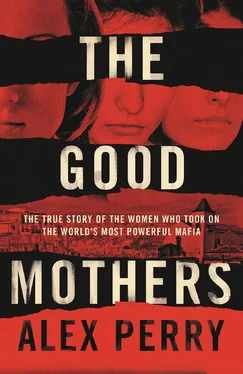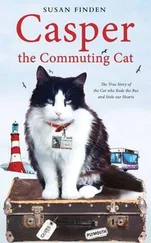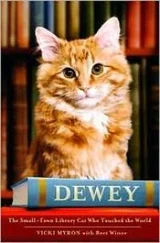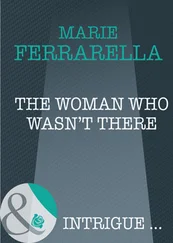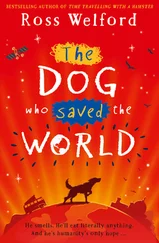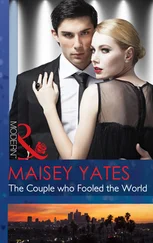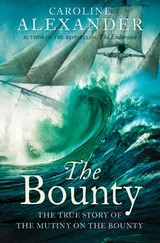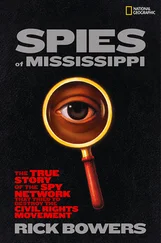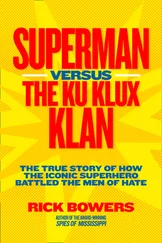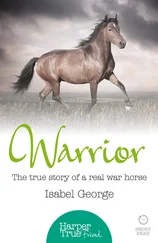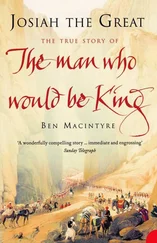By the turn of the twentieth century, Calabria’s street hoodlums had been organised into local cells called ’ndrine , each with their own turf, ranks and boss. At first, picciotti were useful for small matters: appropriating a neighbour’s field for the boss’s cows, resisting rent demands from fussing landlords or extracting protection money from the neighbourhood trattoria . Highway robbery, smuggling, kidnapping and loan-sharking were lucrative earners for more enterprising picciotti . Bosses also took on additional duties like adjudicating property disputes or defending women’s honour.
But as the picciotti endured successive crackdowns by the authorities, some wondered how they might turn the tables on the state. If the source of the wider world’s power came from money, they reasoned, then maybe the way to attack that outside world was to venture out into it, steal its money and take its power?
The Calabrian mafia was soon using its money to buy favours from the carabinieri and the judiciary. After that came bribes to political parties, mayors’ offices, the state bureaucracy and the Italian parliament. In time, the families were also able to infiltrate these institutions with their own men. The insiders then defrauded and embezzled, diverting public funds to mafia-owned contracting businesses such as construction firms, refuse collectors and dockers. Elections were rigged and more allegiances bought. Those who could not be corrupted or intimidated were beaten, firebombed or killed.
All this felt familiar to a Sicilian like Alessandra. But the Calabrians outdid their peers in two respects. Where the Sicilians recruited from a particular area, the Calabrians relied on family: almost without exception, picciotti were either born into an ’ndrina or married into it. And while the Sicilians certainly spun stories about themselves, the Calabrians dreamed up legends that wove together honour, religion, family and southern Italian separatism into an elaborate and almost impenetrable veil of misdirection.
By the early twentieth century, ’Ndranghetisti were tracing their origins to three medieval knights-errant. These figures crop up in mafia creation myths from Asia to Africa to Europe. 3In the ’Ndrangheta version, the knights were Spanish brothers – Osso, Mastrosso and Carcagnosso – who had fled their homeland after avenging their sister’s rape. Landing on the tiny island of Favignana off Sicily’s west coast and taking shelter in damp and cold sea caverns, the trio nursed a sense of righteous grievance and steadfast family loyalty for twenty-nine long and uncomfortably damp years. Eventually their discussions became the basis for a brotherhood founded on mutual defence. With the Honoured Society sworn to protect all members, and they it, no outsider would ever think of shaming the brothers and their families again. And when the brothers felt ready to take their creation to the world, Mastrosso travelled to Naples to set up the Camorra in the name of the Madonna, Osso sailed to Sicily and founded Cosa Nostra in the name of Saint George and Carcagnosso took a land between his two brothers – Calabria – where he established the ’Ndrangheta in the name of Saint Michael, the Archangel.
The story is, of course, bunkum. The Calabrian mafia is not hundreds of years old but barely a hundred and fifty. The story of the three knights also seems copied from that of the Garduña, a mythical fifteenth-century Spanish criminal society whose founding legend would have been familiar to ’Ndranghetisti from the time when Spain ruled Calabria. The irony is that most historians have concluded the Garduña was itself a fabrication. 4This, then, was mafiosi trying to fool others with a piece of gangster fiction which had, in fact, fooled them.
This was far from the only example of mafia make-believe, however. The ’Ndrangheta’s ancient-sounding name did not derive from a venerable heritage but, as Dickie uncovered, was a modern artifice that first surfaced in police reports in the 1920s and in newspaper stories in the 1950s. 5Alessandra found more recent mafia fictions in the form of internet videos ripping off scenes from American gangster movies like The Godfather and Goodfellas and set to Calabrian folk songs. The lyrics to these melodies were hardly poetry but no less chilling for that:
Keep the honour of the family.
Avenge my father.
I have to get good with guns and knives
Because I can’t stop thinking about it.
The pain in my heart –
It can only be stopped if I avenge my father.
Then there were the ‘ancient’ rituals. For a boss’s son, Alessandra read, these could begin soon after birth. A new-born boy would be laid kicking and screaming on a bed, a key next to his left hand and a knife by his right, denoting the state and the mafia. An ’Ndrangheta mother’s first duty was to ensure, with a few careful nudges, that her boy grasped the knife and sealed his destiny. In Tired of Killing: The Autobiography of a Repentant ’Ndranghetista , Alessandra read about the early life of Antonio Zagari, the son of an ’Ndrangheta boss who turned super-grass in 1990. 6In his book, Zagari described a probation of two years, during which a teenage picciotto was expected to prove his worth by committing crimes and even killing, as well as learning by heart the fable of Osso, Mastrosso and Carcagnosso and a set of rules and social prescriptions. After that came a formal initiation ceremony. The ritual began when Zagari was led into a darkened room in which a group of ’Ndranghetisti were standing in a circle. At first, Zagari was excluded. The boss addressed the ’Ndranghetisti, asking if they were ‘comfortable’.
‘Very comfortable,’ they replied. ‘With what?’
‘With the rules,’ said the boss.
‘Very comfortable,’ came the reply once more.
The boss then ‘baptised’ the meeting in the name of the Honoured Society ‘as our ancestors Osso, Mastrosso and Carcagnosso baptised it … with irons and chains’. He ceremoniously confiscated any weapons. The congregation confirmed their loyalty to the society on pain of ‘five or six dagger thrusts to the chest’. The boss then likened their common endeavour to ‘a ball that goes wandering around the world as cold as ice, as hot as fire and as fine as silk’. After the members of the circle affirmed three times that they were ready to accept a new member, they opened their ranks to admit the newcomer. The boss then cut a cross on Zagari’s finger so that it bled over a burning image of Saint Michael while he intoned: ‘As the fire burns this image, so shall you burn if you stain yourself with infamy.’
That was the cue for Zagari to take his oath: ‘I swear before the organised and faithful society, represented by our honoured and wise boss and by all the members, to carry out all the duties for which I am responsible and all those which are imposed on me – if necessary even with my blood.’
Finally, the boss kissed Zagari on both cheeks, recited the rules of the society and delivered a homily to humility, the island of Favignana and blood – which, in case anyone was lost, was the essence of the icy, fiery, silky and world-wandering ball he had mentioned earlier.
It was a wonder anyone kept a straight face, thought Alessandra. Certainly, the cod-medievalism of the ’Ndrangheta’s performances made serious historians choke. Dickie likened the ‘solemn ravings’ of its initiation ritual to a scout ceremony that crossed The Lord of the Flies with Monty Python . One of Italy’s most eminent mafia historians, Enzo Ciconte, was just as dismissive of the ’Ndrangheta’s ‘Red Riding Hood fantasies’. 7But Ciconte cautioned that ridiculous did not mean meaningless. ‘No group of people can last long just by using violence, just by killing, stealing and rustling – they need some sort of faith or ideology,’ he said. ‘The ’Ndrangheta had no tradition. They had to invent one.’
Читать дальше
